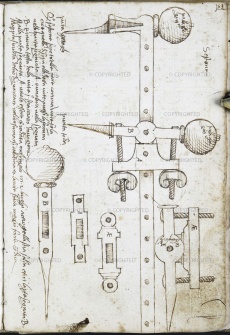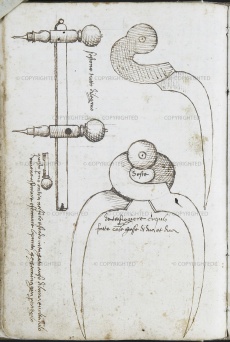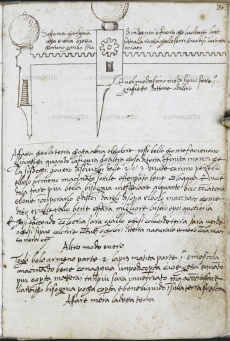Compasso ad asta
Da Invenzioni.
(Differenze fra le revisioni)
| Riga 14: | Riga 14: | ||
|strumentiesistenti= | |strumentiesistenti= | ||
| + | |||
| + | - Museum of the History of Science, Oxford <br> | ||
| + | [http://emu.mhs.ox.ac.uk/Display.php?irn=2770&QueryPage Museum of the History of Science, Oxford, inv. 51264]<br> | ||
| + | |||
| + | |||
|link= | |link= | ||
| + | http://www.tpub.com/engbas/2-11.htm (English) | ||
| + | http://www.mathsinstruments.me.uk/page63.html (English) | ||
| + | |||
| + | |||
| + | |||
|immagini= <gallery widths=230 heights=368 perrow=3> | |immagini= <gallery widths=230 heights=368 perrow=3> | ||
Versione delle 11:11, 8 set 2010
Nome in uso attualmente. Nel Rinascimento era noto come sestone.
Indice |
Periodo Storico
XV-XVI secolo
Descrizione
Compasso per grandi circonferenze formato da una lunga asta sulla quale scorrono due cursori con punta fissa e punta scrivente.
Riferimenti Bibliografici
Della Volpaia, Benvenuto, Macchine e strumenti, ms., XVI secolo, Venezia, Biblioteca Marciana, It. IV, 41 (= 5363), c. 53r-v, 56r.
Strumenti Esistenti
- Museum of the History of Science, Oxford
Museum of the History of Science, Oxford, inv. 51264
Link (Esterni)
http://www.tpub.com/engbas/2-11.htm (English) http://www.mathsinstruments.me.uk/page63.html (English)
Immagini
Autore della scheda: Filippo Camerota



